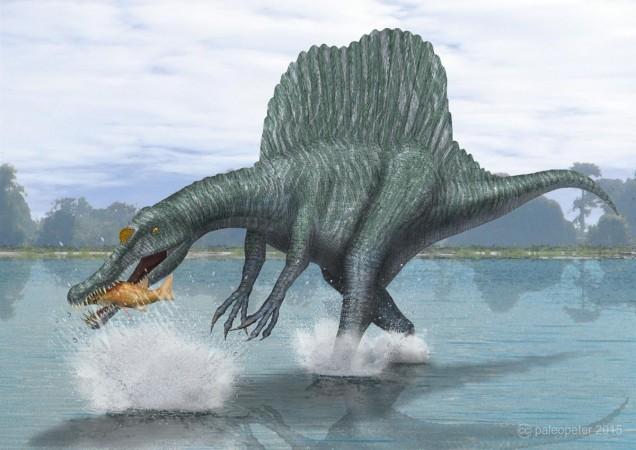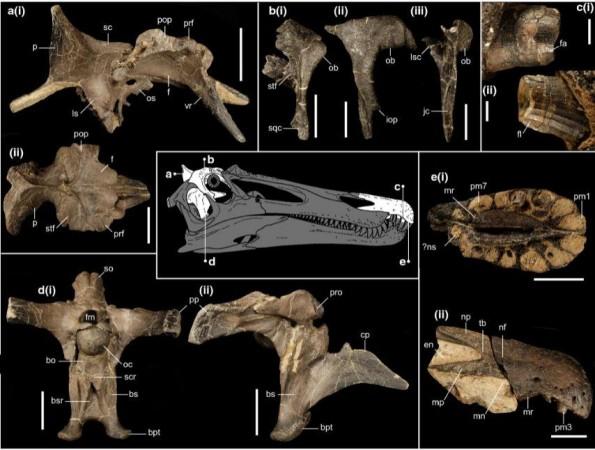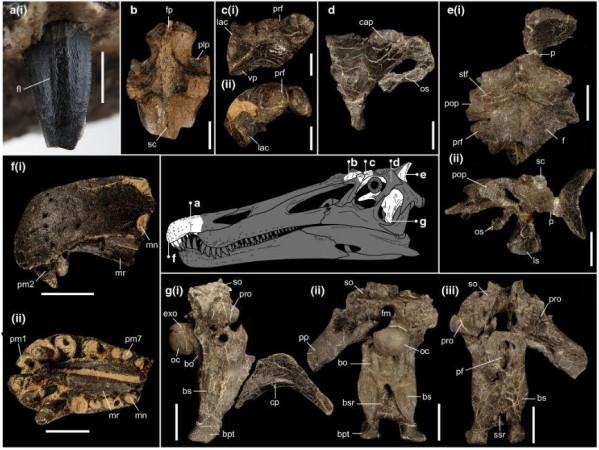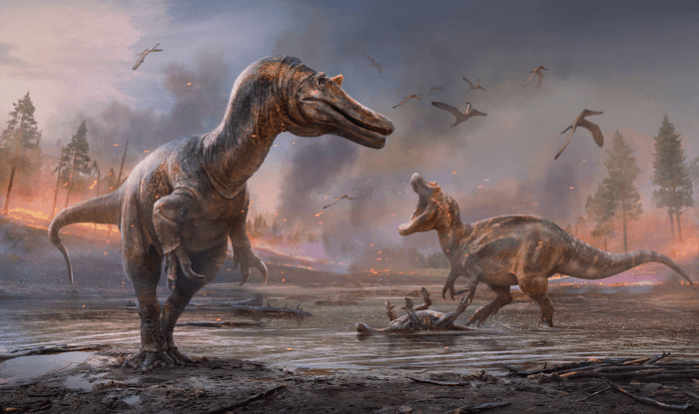If there is a dinosaur that may have struck fear in the heart of a T.rex, it would have been a Spinosaurus. With a spined 'sail' running across the length of its back and a crocodile-like skull lined with razor-sharp teeth, it was a fearsome predator. Now, scientists have reported the unearthing of two new species of closely related dinosaurs in the UK.
In a new multi-institutional study, researchers have described two new spinosaurids in the Isle of Wight in England. The fossilized remains of Ceratosuchops inferodios and Riparovenator milnerae were unearthed in the Wessex Formation where another Spinosaurid, Baryonyx, was found in 1983. The authors estimate that the two new reptilians were over 30 ft in lenght.
"We've known for a couple of decades now that Baryonyx-like dinosaurs awaited discovery on the Isle of Wight, but finding the remains of two such animals in close succession was a huge surprise," said Darren Naish, co-author of the study, in a statement.
Largest Carnivore Ever

Spinosaurids are a group of closely related predatory dinosaurs that form the family of theropods known as Spinosauridae. Theropods belong to a large clade of dinosaurs known as Theropoda—a lineage of which other well-known carnivores such as Spinosaurus aegyptiacus, Tyrannosaurus rex, and Velociraptor mongoliensis are members. Theropods were characterized by their three-toed limbs and hollow bones.
Amongst all known terrestrial carnivores, Spinosaurus is considered to be the largest; even larger than Tyrannosaurus. For example, Spinosaurus aegyptiacus reached lengths of 15 -16 m (49 to 53 ft) and weighed 6,400- 7,500 kg (14110 to 16,535 lbs). Their characteristic crocodile-like skulls aided these dinosaurs in effectively hunting prey in the water and on land. This helped them develop a diverse diet.
Finding Two New Spinosaurids
The bones of the two animals were excavated on a beach near Brighstone, a village in the Isle of Wight, over the course of several years. Portions of the two skulls were initially unearthed by fossil collectors. A large section of a tail was recovered by a crew from the Dinosaur Isle Museum. In total, over 50 bones have been found within the rocks at the site. These rocks are part of the Wessex formation that dates back to over 125 million years ago.

Rocks from the Early Cretaceous on the Isle of Wight chronicle pre-historic floodplain conditions with a Mediterranean-like climate. Though mostly temperate, the landscape faced forest fires occasionally. The cliffs in the area still bear remains of burnt wood.
With the presence of a massive river and other water bodies that held numerous varieties of fish, crocodiles and sharks were drawn to the region at the time. This also presented the two new species of dinosaurs with ample hunting opportunities within the habitat.
Jeremy Lockwood, a fossil collector who uncovered several of the bones, noted, "We realised after the two snouts were found that this would be something rare and unusual. Then it just got more and more amazing as several collectors found and donated other parts of this enormous jigsaw to the museum."
Terrors of Water and Land

The discovery of the two new spinosaurids is of great significance as only one spinosaurid skeleton has been previously unburied in the UK. It was that of a Baryonyxthat was found at a quarry in Surrey in 1983. All the others findings have been largely restricted to single bones and isolated teeth.
Christened Ceratosuchops inferodios, the first specimen's name translates to "horned crocodile-faced hell heron". The brow region of the dinosaur is ornamented with low horns and bumps. Another reference that the name alludes to is the predator's potential hunting style that would have been similar to a heron. Herons capture aquatic preys that are found around the borders of waterways. However, their diet is flexible and may include terrestrial prey as well.

The second dinosaur was named in honor of the late Angela Milner, an accomplished British paleontologist. Called Riparovenator milnerae, it translates to "Milner's riverbank hunter". Dr. Milner was involved in the studying and naming of Baryonyx. This was an important palaeontological event as the discovery greatly enhanced the knowledge about these unique predators.
Talking about stumbling upon similar species within such close proximity, Dr. David Hone, co-author, explained, "It might sound odd to have two similar and closely related carnivores in an ecosystem, but this is actually very common for both dinosaurs and numerous living ecosystems."
New Understanding of Dispersal

While the skeletons are still incomplete, the authors approximate that Ceratosuchops and Riparovenator measured about 9 m (30 ft) in length. They caught prey with their skulls that were around 1 m (3.3 ft). Importantly, the study also suggests that spinosaurids may have evolved in Europe first and spread to Africa, Asia, and South America later.
Highlighting how the current research has broadened the potential for finding paleontological diversity in the UK, Chris Barker, lead author of the study, stated, "We found the skulls to differ not only from Baryonyx, but also one another, suggesting the UK housed a greater diversity of spinosaurids than previously thought."
The research is the result of the collaboration between collectors and academics, thereby, emphasizing the potential for fruitful associations in the future. "On behalf of the museum I wish to express our gratitude to the collectors, including colleagues at the museum, who have made these amazing finds, and made them available for scientific research. We also congratulate the team who have worked on these exciting finds and brought them to publication," expressed Dr. Martin Munt, Curator of Dinosaur Isle Museum.















